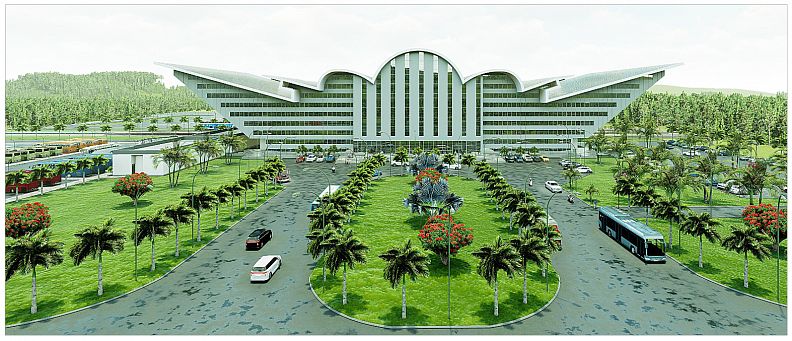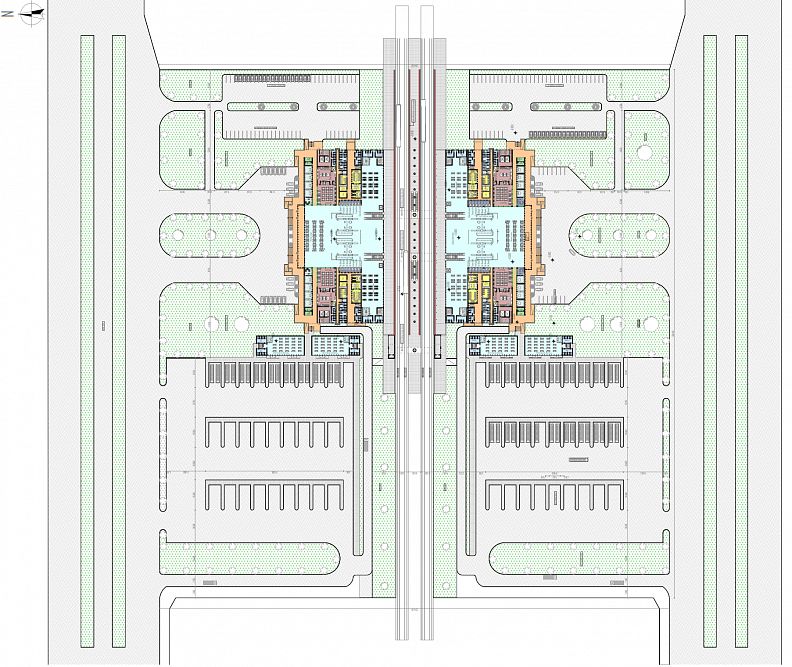Design of Intermodal Passenger Terminal at Pugu Railway Station in Dar es Salaam

Project idea
PROJECT IDEA
The recent population proliferation in the fast growing Dar es Salaam city has brought a lot of challenges in urban transport services. However the urbanization trend is said to grow even more rapidly in the few years to come. With the estimation that Dar es Salaam will be a city of 15 Million plus residents by 2036 from 5.3 Million plus in 2019. This increase in population is attributed to pull and push factors which attracts people from rural settings to come into the city searching for decent jobs, quality services, and to fulfil the aspiration of living modern life in the city.
There are significant volume of passengers moving to and from Dar es Salaam for social and economic reasons. The volume will increase more and more as the city continues to expand.
This relationship between urban transportation and increase in population has triggered me to undertake this project, which among other things seeks to solve the existing impediments of commuting around the city. It intends to intercept passengers that heads to and from the upcountry regions using the Pugu railway station and distribute them on the northern and south sides of the city. Towards north through Pugu – Kibamba – Luguruni – Bunju and towards south through Pugu – Gongo la mboto – Mbagala – Mzinga.
It is designed to be a transit hub that focuses on reducing traffic in the inner parts of the city. Whereas it was previously used for all cargo and passenger trucks travel though up to the interior neighborhoods of the Dar es salaam city. With this terminal all the passenger will not necessary have to come up into these areas to access transport to other parts. This is also meant to attract more passengers to use the train instead of buses
Project description
Project: Intermodal Passenger Terminal
The intermodal passenger terminal occupies a site in the northern area. The site is surrounded with forest reserve and settlement developments and wide range activities from tourism to education services. It is a facility that will serve more than 120,000 passengers per day both arrivals and departures combined.
Divided into two major segments; the northern terminal complex and the southern terminal complex. This public transport interchange aims at creating a node with high quality environment that will serve as a landmark orienting passengers throughout the city suburbs.
The Intermodal terminal
The rectangular shape of the one story terminal building gives a distinctive architectural appearance, different from other buildings in the city. The form has been inspired by the commemoration and recognition of the current socio-economic achievements. It expresses the celebrations of the successes realized and looks forward to more positive results.
The structural system devised is a logical solution towards attaining large span free spaces for clear circulation and views.
All functions of the components of the terminal are organized to make concentrations of people and activities around the central terminal building. This is where the dominant transport mode is positioned setting up a focal point of all three parts of the terminal.
The bus terminal is at the right side of the complex consisting of waiting lounges, shops, washrooms and a foot bridge that spans the two sides of the terminal compound.
The parking lots on the left side accommodates small vehicles both private and commercial taxis, uber and the like which is also planned to offer easy accessibility to users and drivers.
Inside the terminal building there are two equally divided sides with each containing shops, restaurants, ticketing booths offices and washrooms. The intention is to provide legible operations to departures and arrivals by providing direct paths, escalators and lifts.
The other exterior spaces include drop off point for executives and special passengers located just closer to the entrance. In addition to this there is also some few spaces reserved for parking around that enables for vehicles to wait for arriving executive passengers.
All these functions and spaces uses are organized in a clustered layout pattern with the major cluster being the terminal building.
The ground and first floor are what comprise of rail transport services. One concourse in each side and the upper waiting lounge that serves for arrivals and departures that wait for long or short time.
The lounge is designed to enable users have a look at the well-designed landscapes and greeneries outside the building, together with the moving vehicles in order to have a rich and satisfying travel experience.
The Platform zone
The terminal has been designed with the desired to accommodate several train routes. It has three platforms, Platform No. 01, Platform No. 02, and Platform No. 03. The middle platform can be accessed via a suspended bridge which is wide enough to accommodate a line of four people moving together. It is a trussed structure supported both at the top and the bottom.
The mid platform can be accessed from both sides, and it has two foot bridges with one for arrivals and the other for departures.
The other two platforms are connected with the terminal buildings, connected with all the core services. It is determined for routes with large amount of passengers with either long or short distance travel distances.
The form
The design impression of the terminal building is meant to appreciate and honor the favorable outcomes and attainments of the running our modern society.
And it is intentional to create a form that will be a landmark orienting people to and from all the city districts. And it will act as an inspirational for architects to design building that praise the any efforts that seeks to positive changes to any community.
Technical information
DESIGN CONCEPT
Use of hybrid form in the design with mixed slanting wall glazed wall surfaces and curved - geometrical roof shapes intended to express the prosperity of the our nation within the prevailing peace and unity.
The series of curves and ending projected strips and the full glazed façade offer a dynamic form that is supported by the three combined structural systems, a concrete shear wall system, steel framed system and the space framed truss system on the roof part.
ZONING
The interrelationship of zones that makes up the site was obtained from the site analysis, study of existing situation, sizes and dimensions. The programming of spaces and the link between interior and exterior spaces also influenced the overall site planning.
The bus terminal has the capacity to accommodate 108 number of buses. The parking spaces designed to park 110 small vehicles.
There also a crossing pedestrian bridge outside the terminal building to enable for people to cross to the other side of the terminal without passing through inside the building.
SPATIAL ORGANIZATION
Organization of spaces is done in three categories
Access-egress zone
A zone that links the local area and access to the transport modes present. It is furnished with well-designed landscape and bus transport facilities.
Facilities zone
It consists of supporting services including retail shops, restaurants, ticketing, etc
Arrival-departure zone
A platform area which allows for passengers to aboard or disembark from the trains.
FORM DEVELOPMENT
The configuration and articulation of the proposed building has been given a hybrid forms which seeks to ignite a feeling of appreciation and acknowledgment. The use of glasses enables get full natural light in the inside spaces. The certain lines of the panels are operable to allow for natural ventilation when there are technical problems.
STRUCTURAL CONCEPT
The terminal building is large 100m long and 50m Wide
The concept is developed from the combination of different structural systems in a single structure
The structure is made up of shear wall structure at a low level, at the mid-level steel framed structure and at the top roof level a space steel truss structure.
ENVIRONMENTAL ASPECTS
LIGHTING
The façade of the building is skinned with transparent glasses. The glazing on all four sides of the building is to allow for natural light from all the four sides particularly to waiting lounges, main corridors and other areas with concentration of people. The purpose is to allow for visibility and reduce electrical lighting load which would have produced extra costs during operation.
VENTILATION
The design allow the use of both natural and mechanical ventilation systems. The glass panels are operable, they can be opened when the mechanical ventilation system get breakdowns or during its maintenance and repair.
A central type mechanical ventilation system will be used, with the main machine placed on the top floor to allow for easy distribution throughout the building zones.
LANDSCAPE
The objective of landscape design is to enhance the environmental quality though maintaining air quality, shades, attract movement of air and enhance good exterior views.
The landscape consist of lawn, palm trees, shrubs and flowers planted in the parking areas, bus terminal and along the access zone to the main entrance.
CIRCULATION
HORIZONTAL CIRCULATION
There is one main entrance at the center and two minor entrances on the left and right sides. The linear wide corridors that for passengers heading to and from bus and taxis parking respectively. The passages meets on the concourse which leads to ticketing booths divided for arrivals and departures.
VERTICAL CIRCULATION
Vertical circulation allows passengers and users to move to the middle platform also to maneuver from one side of the terminal to the other side of the terminal.
It is mainly comprised of staircases, escalators, lifts and foot bridges.
It is intended that disabled people will use ramps and lifts when traversing around the terminal from one place to another.












